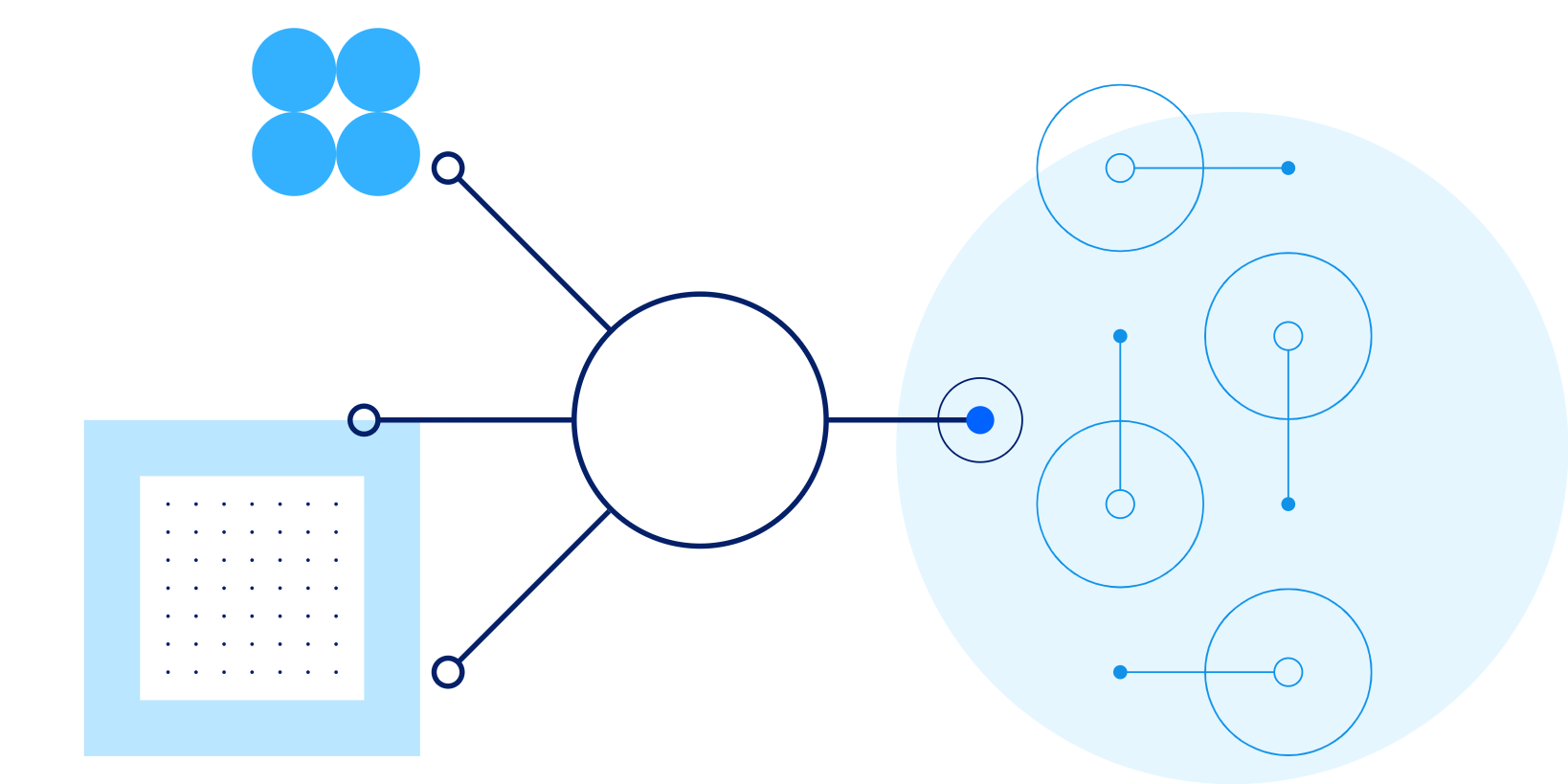About cookies on this site Our websites require some cookies to function properly (required). In addition, other cookies may be used with your consent to analyze site usage, improve the user experience and for advertising. For more information, please review your options. By visiting our website, you agree to our processing of information as described in IBM’sprivacy statement. To provide a smooth navigation, your cookie preferences will be shared across the IBM web domains listed here.
Perspectives
Building a supply chain fit for the future
19 October, 2021 | Written by: Carmel Duffy
Categorized: Perspectives
Share this post:
See how you can use technology to transform your supply chain and support sustainability and transparency.
Imagine that you’re preparing an order with products for customers with nut allergies. Moments after clearing the order for delivery, one of your suppliers gives you bad news: the batch of products that you just sent were cross contaminated with nuts during the manufacturing process. The product delivery is now compromised, endangering both the customers and your company’s reputation.
In the dynamic, global economy of the present, disruptions in the supply chain can create chaos on the market and be irreparably detrimental to businesses and beyond. Today’s supply chains are evolving from simple systems of linear supply and demand into complex ecosystems of suppliers, manufacturers, distributers, and customers that change constantly. Considering this newfound complexity, digital transformation is a necessity for supply chain success.
The integration of cloud technology, blockchain and AI with supply chains can pave the way for enhanced connectivity that allows stakeholders to know exactly what is going on in the supply chain. At the same time, this integration can help you provide a true omnichannel experience for your customers. Inventory management, order orchestration and fulfillment processes can all be enhanced with artificial intelligence solutions to create the holistic view across the entire supply chain that retail and consumer goods companies need. Robotic process automation (RPA) crawlers and AI can be deployed to analyze deliveries and suppliers, as well as identify potential risks or shortages. Blockchain solutions can help transform supply chain processes by extending transparency, security, and trust across transaction partners.
The supply chain of the future
Building a smarter business network to provide visibility into your supply chain can empower you to act with speed and confidence to mitigate disruptions before they become a problem.
A growing number of organizations are already using AI and analytics to process the vast amounts of data they already generate and to understand what is happening in their business now, as well as better predict what will happen in the future. Gartner estimates that by the end of 2024, 50% of supply chain organizations will have invested in applications that support AI and advanced analytics capabilities.[1]
IBM® has the knowledge and resources to assist organizations in developing a continuous intelligent planning approach for their supply chain needs. This approach uses AI-augmented capabilities to help organizations address challenges in visibility, forecasting, collaboration and workflows.
For example, product compliance warnings could be provided through a supply chain control tower that can analyze available data and predict ingredient source and quality, environment integrity, shelf life, out-of-stock inventory and much more.
The IBM Sterling® supply chain suite can provide your organization with end-to-end visibility, real time insights and recommended actions to turn disruptions into opportunities for customer engagement, growth and profit. The suite consists of various components designed to use AI and blockchain technology to create a trusted, responsive and interconnected supply chain ecosystem for you and your business allies:
- A supply chain control tower that unifies processes and data from disparate sources under a single, unified view. The AI-powered, personalized dashboard of KPIs and events can help you to understand, prioritize and address critical issues in real time.
- Supply chain applications for supplier, inventory and order management, embedded with AI and blockchain and trained for supply chain. These applications are proven to enable faster and more informed decision making.
- Supply chain data and AI services that are trained in supply chain and open to developers. These apps can accelerate custom application development and data integration.
- A cloud-based supply chain business network that’s enabled with AI, blockchain and API capabilities. The network provides trusted, multi-enterprise connectivity and supply chain integration, with a centralized information hub for data management.
We can exemplify with the successful journey of a company which moved from independence to cooperation to increase revenue. The company used IBM Sterling B2B Integrator, IBM Sterling Order Management and IBM MQ software to create 1,200 cooperating stores that share inventory, catalogs and order fulfillment. You can also watch this video to see how IBM Order Management can help personalize deliverables while protecting profit margins.
Driving transparency and sustainability
Modern technology can help transform your organization’s supply chain processes by extending transparency, security, and trust to all transaction partners.
A good example is the IBM Food Trust, a collaborative network of growers, processors, wholesalers, distributors, manufacturers, retailers, and others, built on blockchain with the goal of creating a safer, smarter and more sustainable food ecosystem. The stakeholders participating in the network enjoy a breadth of benefits:
- Increased supply chain efficiency. You can use the platform to eliminate bottlenecks in the supply chain.
- Enhanced brand trust. You can use the added transparency to build a reputation for safety and quality to increase consumer confidence.
- Fresher and safer produce. You can actively monitor the products in your supply chain to ensure safety and regulatory compliance and estimate shelf life.
- Added sustainability. You can enrich each step of the food supply chain with sustainability opportunities and practices.
- Diminished food waste. You can track food wasted and food rescued, as well as reduce waste hot spots.
- Less food fraud. You can use end-to-end traceability to make your supply chains less susceptible to fraud and errors.
Watch this video to see how a fishing company is using IBM Food Trust to monitor their catch from harvest to table, building consumer confidence and infusing trust across their entire supply chain. These types of collaborative networks are based on data sharing, which can be great for business and help build trust in your partners. A supply chain transparency solution can help you transact with partners in a more secure and efficient way, driving speed and accuracy throughout your networks.
To conclude, success for supply chains in the modern, digital world is tightly connected to their ability to evolve and keep up with market demands and consumer expectations. Getting the buyer journey right, from beginning to end, is essential to company’s future success. Watch this webinar to see how you can create brand trust and loyalty with supply chain optimization. If you want your company to stay relevant in today’s competitive retail environment, take advantage of the new technologies that can help you build a supply chain fit for a digital future.
Get in touch and let me share with you more ways to modernize your supply chain.
[1] https://www.gartner.com/smarterwithgartner/gartner-predicts-the-future-of-supply-chain-technology/

Carmel Duffy
IBM Managing Director for Unilever, IBM VP
More stories
By Helen Gowler on 3 October, 2024
Generative AI: driving a new era of HR transformation
Helen Gowler, Partner, EMEA Talent & Transformation Lead Today, I’m proud to be part of a company that’s committed to addressing gender bias in the tech industry. IBM is pioneering the use of AI to tackle this issue, and I’m excited to contribute to this effort. Our team is developing AI models that can detect […]
By Mark Restall on 18 July, 2024
Multi-Modal Intelligence Platform
Traditionally, data management systems provided only numerical or textual based business intelligence primarily for back-office users across finance, sales, customer management and supply chain. Today, we are increasingly seeing data management systems which drive key business functions requiring interrogation of multi-modal data sets from documents, presentations, images, videos to audio. This demands a more sophisticated […]
By Mark Restall and others on 16 July, 2024
The use of GenAI to Migrate and Modernise Organisational Core Programming Languages
GenAI is hugely powerful and supports a diversity of use cases by focusing on routine work – allowing people to focus time on value-add tasks, thus enhancing productivity. The focus of this use case is for an organisation which had previously focussed on a legacy set of tooling and programming languages and needed a way […]





























